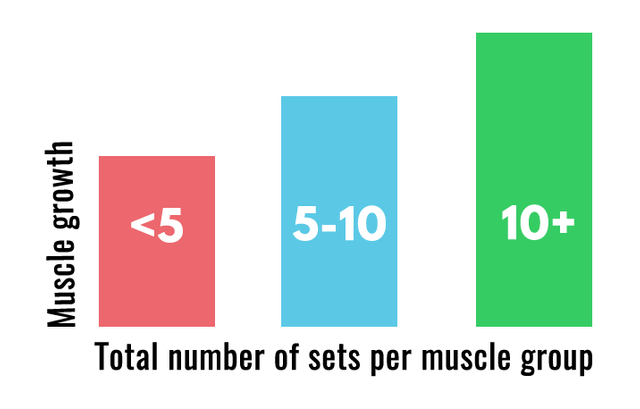How many sets should we do in the gym?
Many will ask the basic question – how many sets should we do in the gym. The volume is counted as (sets number) x (number of repetitions in the sets). However, this measure has one flaw – it doesn’t take the weight you are lifting into the formula.

In order to better describe the overall work, we need another variable.
Volume load
As we can see from the title, we can calculate the volume load like this: (number of sets) x (number of repetitions in the sets) x (weight). This gives us a much better insight because it isn’t the same effect when doing 12 reps with 40kg and 12 reps with 80kg.
There is a strong link between volume load and hypertrophy. The higher the volume load, the higher is muscular growth, to a certain extent. When we consider this in the context of the last article about hypertrophy, that makes sense.
Greater overall work – greater mechanical tension, greater metabolic stress, greater damage to muscle fibers.
Volume load affects muscle growth.
However, there is a limit! Excessive stress caused by training goes beyond the ability of the body to recover. Not only does the increase in volume above this limit have no benefit, it can even negatively affect muscle growth and bring other symptoms of overtraining.
How many sets should we do then?
It seems very straightforward and easy, but it is not. One of the most common questions, and almost no one understands that the question is not complete. Most people take it normally with the meaning of “How many sets of a specific exercise per training” but we have ask this question in a different way.
How many sets per muscle group in a week?
The same muscle is generally stimulated by many different exercises in most programs. It’s about chronic stimulation, not acute – so we need the number of sets per week and not per training.

We have recent (mid-2016) meta-analysis from Brad Schoenfeld’s laboratory, one of the leading experts in this field. They compared effect of people who were working less than 5 series per week for the muscle group, 5-9 series, or 10 and more sets per muscle group per week. The last group convincingly had the best results.
German Volume Training (GVT) method
The whole point of this method is to make 10 series of 10 repetitions (10×10) for a given exercise. As far as this method was known, only at the end of 2016 the first study was conducted directly on it. They compared classical GVT (10×10) with modified GVTs where they worked “only” 5 series of 10 repetitions.
Result: The modified program proved to be superior, although the total weight volume was much smaller. This is a good indication that you do not just have to look at the total volume of the week, but you should not overdo it with the volume of training, but that is a matter of frequency.
What have we learned today?
Volume load is one of the most important weight training variables for muscle growth -it describes total work and (positive) stress on the body. In practice, we apply this by selecting the number of sets per week of muscle group – it is a general recommendation to target 10 sets per week.
Advanced exercisers can experiment with a larger volume, but they must be careful of overtraining.
References:
http://people2people.hr/index.php/component/content/article?id=75:volumen-koliko-serija-raditi
https://www.ncbi.nlm.nih.gov/pubmed/27941492
https://www.ncbi.nlm.nih.gov/pubmed/27433992
https://www.facebook.com/donat.rupcic
https://www.facebook.com/powerbuilding.hr/
http://different.hr/en/how-many-sets-should-we-do/